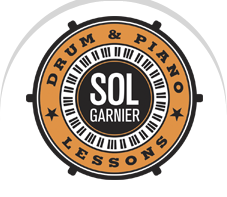Once you have chosen what your direction will be, what you want (hope) the audience will get from your performance, it is time to prepare.
That’s where the discipline comes in. And the creativity. Because, no two ways about it, playing music is a handicap. You have to use an instrument to entertain crowd. Yes, even if you are a singer and you wear a head set. You are not an actor, someone who can sit at a table and say a monologue. Someone that can play catch while talking (As in “Death of a salesman). Your prop is your instrument. And you have to work with that severe boundary. If you are in a rock band and every one plays an instrument like guitar, bass or drums, your hands are not available for any lengthy gesture. You might barely have the time to wipe off the sweat on your forehead.
It’s tough.
But, as Peter Gabriel said, give an artist too much freedom and he will do nothing, he’ll just stay thinking of what could be, and no work will be produced. So, give a performer some limitations, and he has to find a way around the problem.
A musician, I’m talking the magnetic, charismatic type, will be moving his body a certain way, have certain expressions while he plays. I’m thinking Michael Jackson here, or Madonna. If he has a guitar in hand, a good example would be Dave Grohl. For piano, Elton John set the bar very high in energetic performance. For bass, how about Sting? Or Gene Simmons of Kiss? For drums? Well, for drums, it’s a bit more complicated. The only one I can think of was Slim Jim Phantom , the drummer of the Stray Cats. I have rarely seen the drummer be the focal point of attention in a concert.
Still, when you are rehearsing, you can draw from the examples I just mentioned to craft some moves, some poses to help the crowd understand what you are trying to express. The performing musicians can become excellent actors. Johnny Depp on Bass, Billy Bob Thornton, Tom Waits, etc…
So, let’s sum it up so far. What have we got?
First, you have to decide what kind of party you want to throw when you play in front of an audience. Second, you have to work within the limitations of your instrument.
Then you have to combine the two things together. Don’t think it is a given. Rehearsing songs sitting down is not the same as rehearsing songs while moving wildly. Your tempo might be off, your part can get very shaky, your dynamics can end up all over the place. Include the performing part of playing into the preparation of a show. Because so much can go wrong once you’re on stage.
